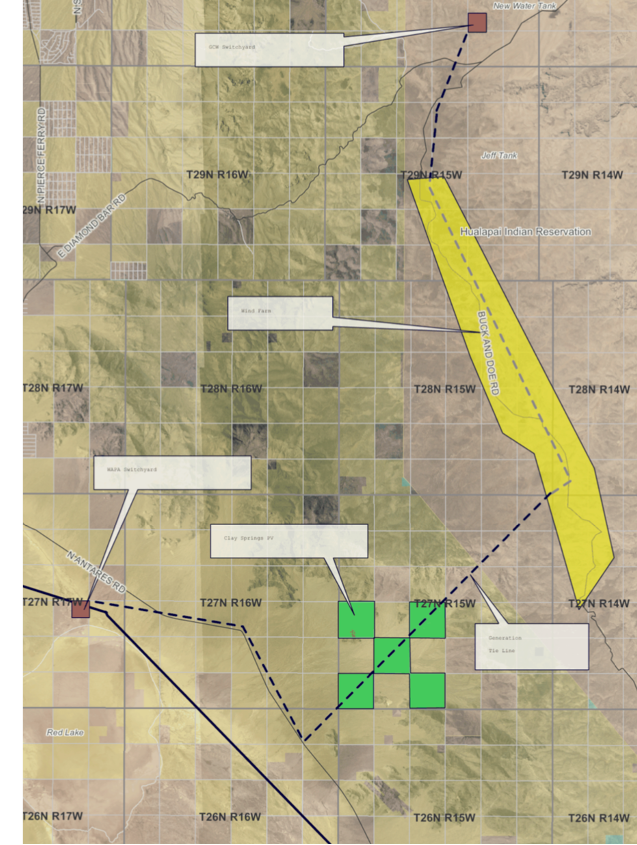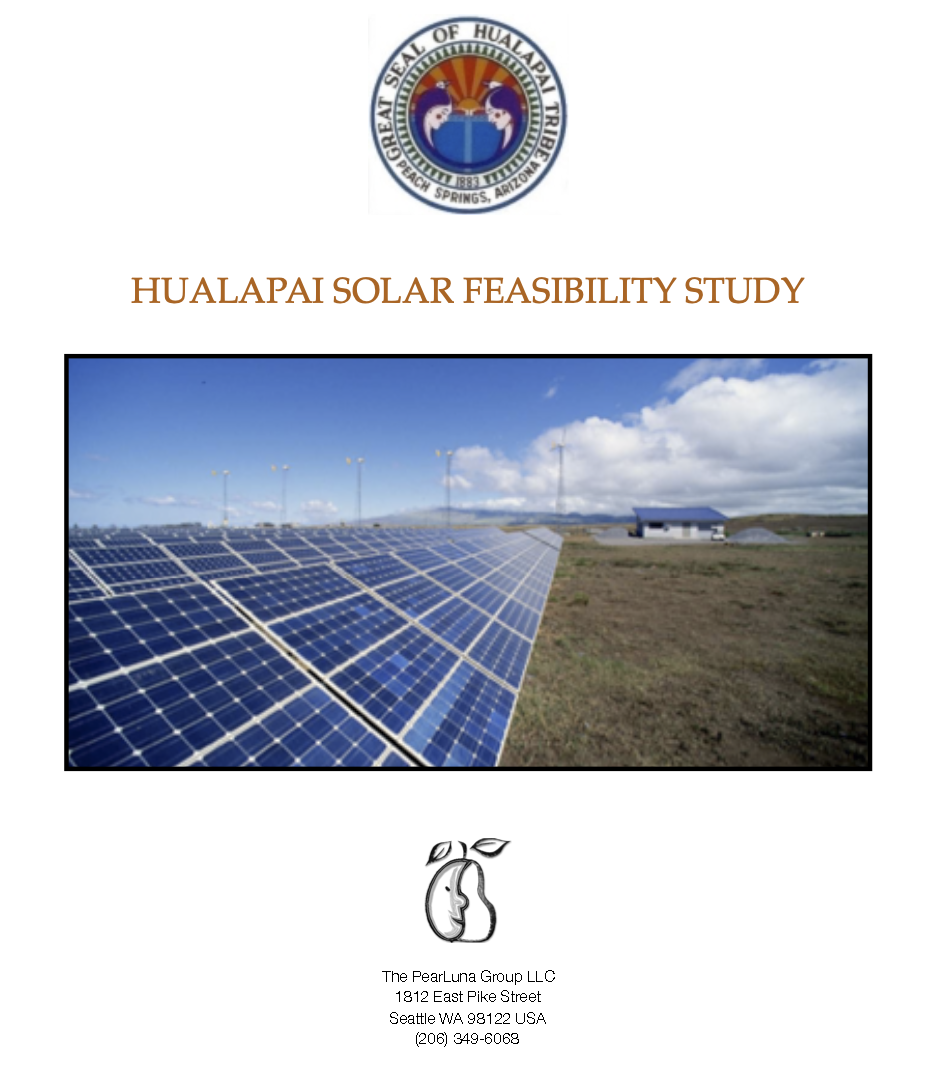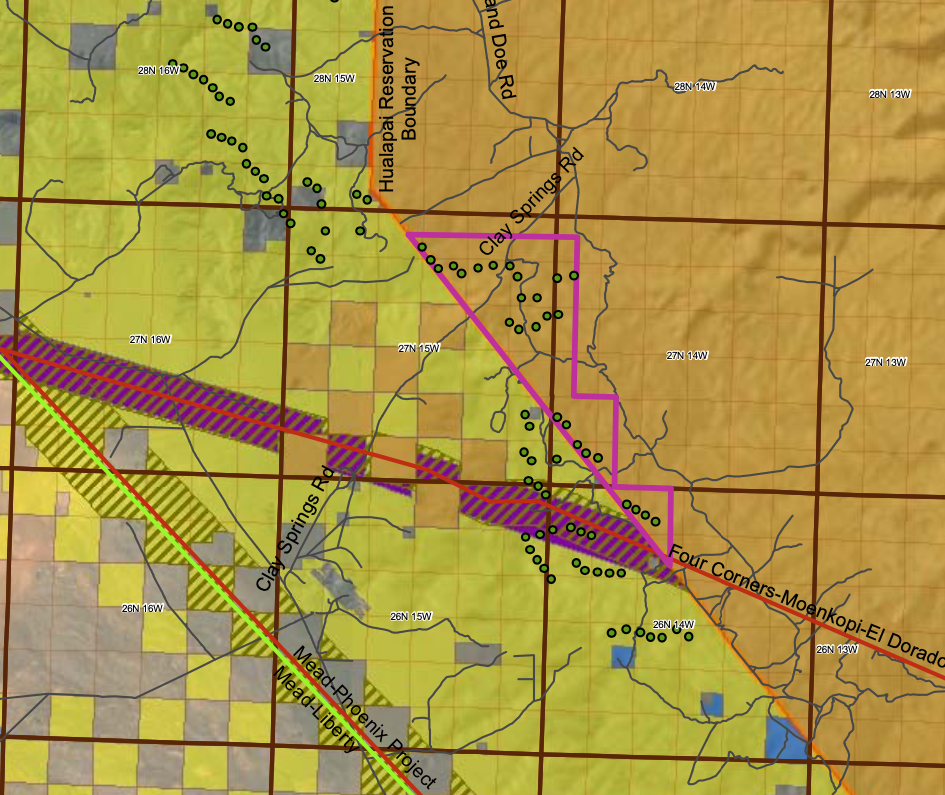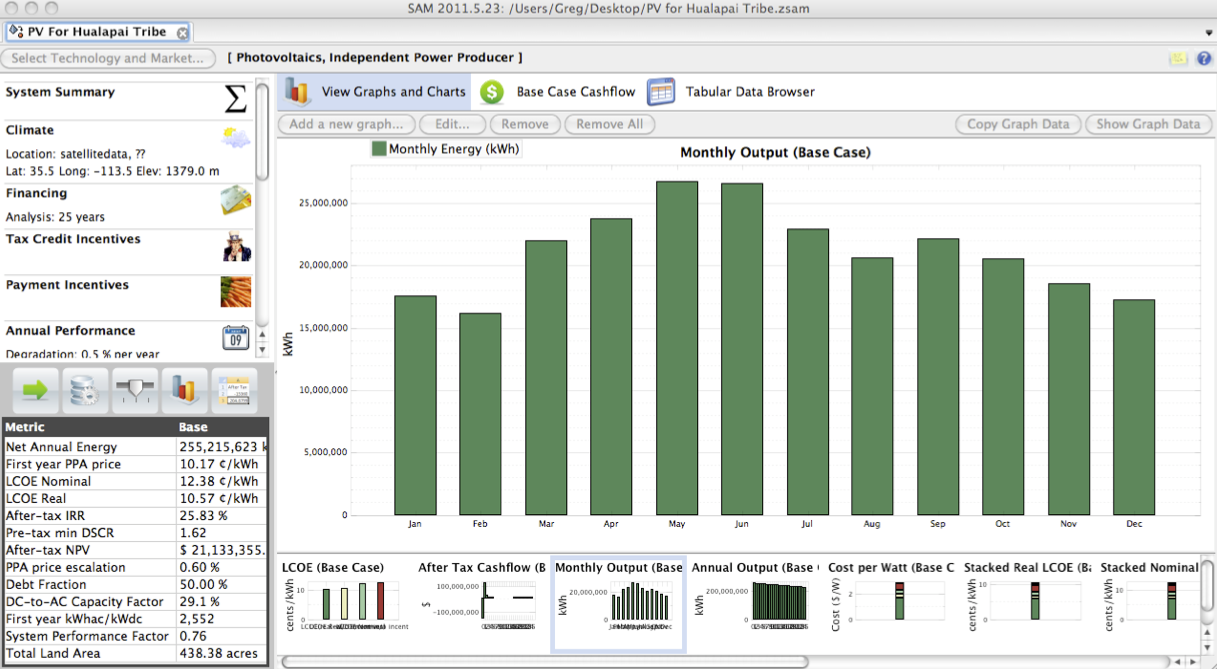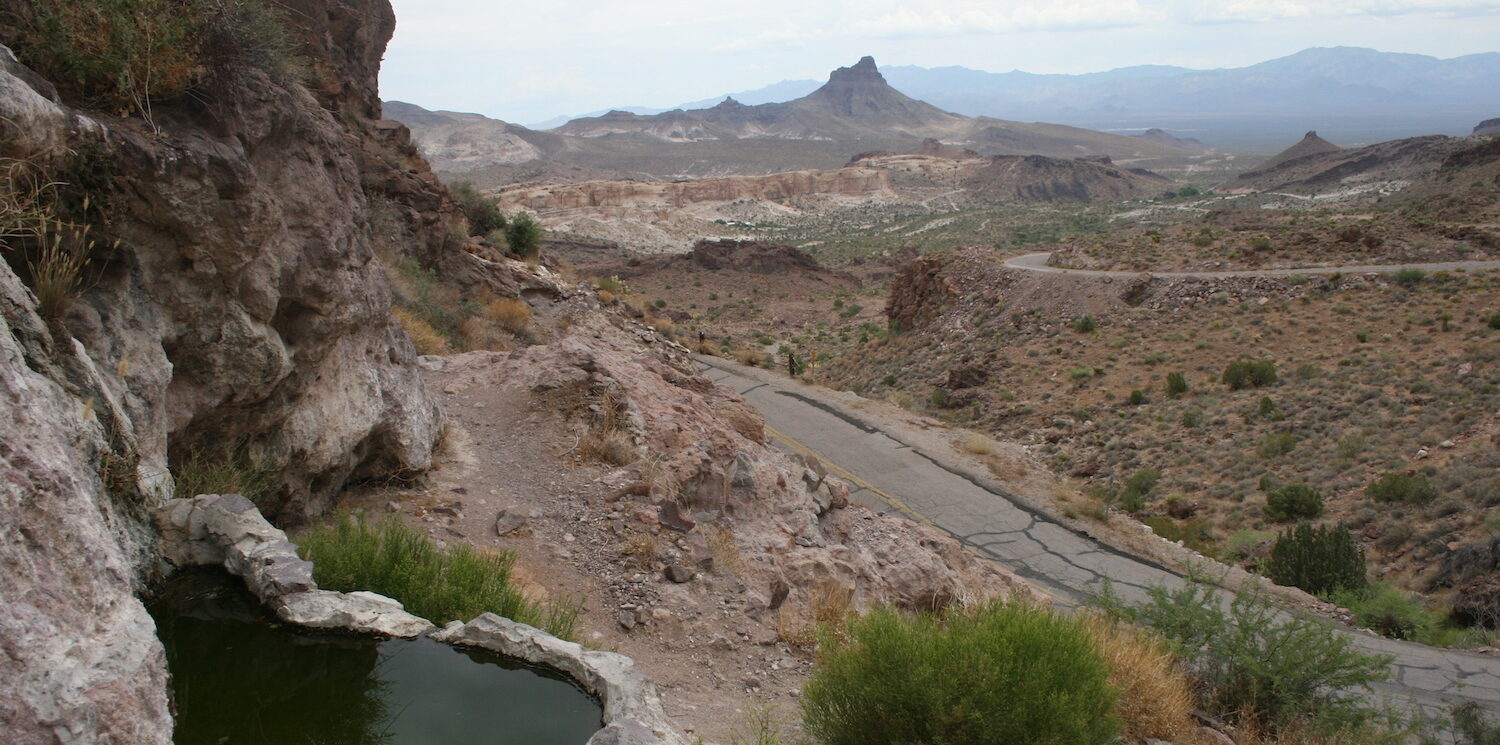Client: Hualapai Tribal Nation /
Location: Hualapai Reservation /
Services: Tribal Energy Program wind & BIA solar study /
The Hualapai Tribe, located in northern Arizona, began exploring renewable energy development opportunities on their reservation lands in the late 2000s. Around 2008-2009, the tribe received funding from the U.S. Department of Energy’s Tribal Energy Program to conduct resource and feasibility assessments for wind and solar projects.
As part of these assessments, the tribe identified Clay Springs as one of the potential sites for renewable energy development. Clay Springs, along with other areas like Nelson, Grand Canyon West, Peach Springs, and Blue Mountain, was evaluated for its wind and solar resource potential.
In 2010, the tribe received additional funding from the Bureau of Indian Affairs Energy and Mineral Development Program specifically for a solar feasibility study. This study identified Clay Springs as one of the potential sites for a large-scale solar project, with the possibility of developing 100-150 MW of solar photovoltaic (PV) capacity.
Concurrently, the tribe was also assessing wind energy potential across their lands. While the initial focus for wind development was on the Buck and Doe area (where they were pursuing a 170 MW wind project), Clay Springs remained under consideration for potential wind energy development as well.
The tribe’s approach to renewable energy development was comprehensive, considering both wind and solar technologies. They conducted various environmental studies, including avian surveys, to ensure the feasibility and sustainability of potential projects.
By 2011, the Hualapai Tribe had made significant progress in their renewable energy planning. They had completed preliminary assessments, identified potential project sites, and were moving forward with more detailed feasibility studies. Clay Springs emerged as a promising location for solar PV development, with the tribe actively pursuing plans for a 100-150 MW solar project in this area.
Throughout this period, the Hualapai Tribe’s Planning and Economic Development office led these renewable energy initiatives, utilizing Greg Bartlett as their primary energy consultant. The tribe also prioritized the development of its own utility authority, receiving support from the U.S. DOE Tribal Energy Program in 2005 to establish a utility authority. This authority was intended to provide service first at Grand Canyon West and then for the remainder of the reservation, supporting the tribe’s broader energy development goals.
